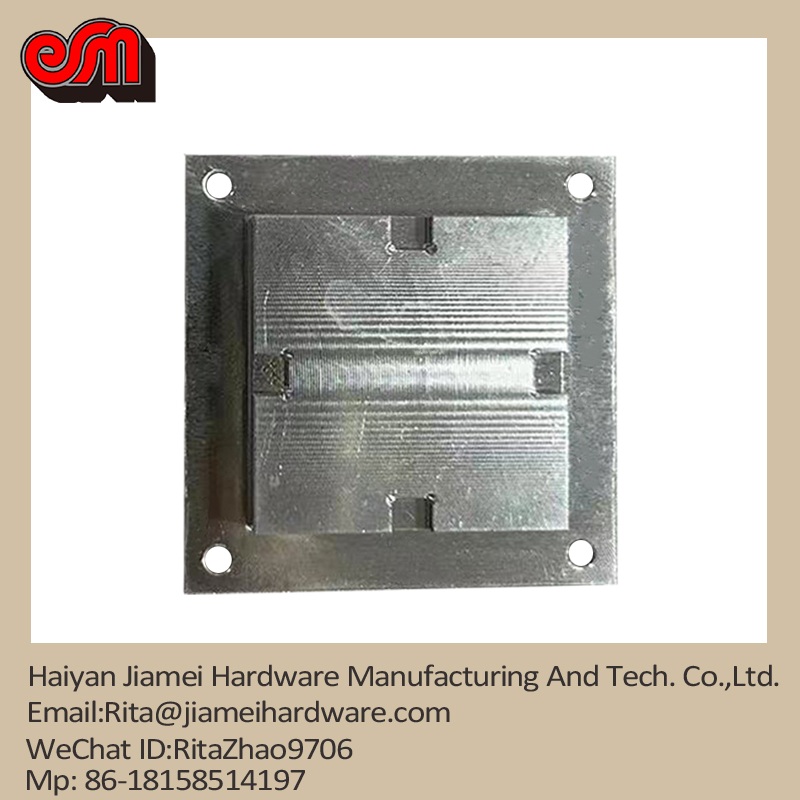What Makes CNC Machining Precision Parts Indispensable in Modern Manufacturing?
2025-08-11
In the realm of modern manufacturing, precision is the cornerstone of quality, efficiency, and innovation. Among the technologies driving this precision revolution, CNC machining stands out as a game-changer, producing intricate parts with unparalleled accuracy for industries ranging from aerospace and automotive to medical devices and electronics. CNC machining precision parts are not just components—they are the critical elements that ensure machinery operates smoothly, products perform reliably, and engineering designs are brought to life with exactitude. As manufacturing standards grow stricter and product complexity increases, understanding why these precision parts have become indispensable is key for businesses aiming to stay competitive. This guide explores the vital role of CNC machining precision parts, outlines the factors that define their quality, provides detailed specifications of our premium offerings, and addresses common questions to assist professionals in making informed decisions.
Trending News Headlines: Top Searches on CNC Machining Precision Parts
- "Medical-Grade CNC Precision Parts: Meeting Strict Regulatory Standards"
- "High-Speed CNC Machining: Faster Turnaround for Precision Components"
These headlines highlight the growing demand for precision parts that align with sustainability goals, regulatory compliance, and faster production cycles—key priorities for manufacturers across sectors. As industries evolve, CNC machining precision parts continue to adapt, offering solutions that balance speed, accuracy, and reliability.
Why CNC Machining Precision Parts Are Critical for Modern Manufacturing
Unmatched Accuracy and Consistency
In industries where even the smallest deviation can lead to catastrophic failures—such as aerospace or medical device manufacturing—precision is non-negotiable. CNC machining uses computer-controlled tools to produce parts with tolerances as tight as ±0.0001 inches, ensuring each component meets exact design specifications. Unlike manual machining, which is prone to human error, CNC systems repeat the same operations with consistent accuracy across thousands of parts. For example, a turbine blade for a jet engine must fit perfectly with other components to avoid vibration or inefficiency; a precision-machined part guarantees this fit, reducing the risk of performance issues or accidents. This level of consistency is vital for mass production, where every unit must adhere to the same high standards.
Versatility Across Materials and Designs
CNC machining precision parts can be crafted from a wide range of materials, including metals (aluminum, steel, titanium, brass), plastics (ABS, PEEK, nylon), and even exotic materials like ceramics or composites. This versatility allows manufacturers to choose the optimal material for their application—whether it’s lightweight aluminum for aerospace components or corrosion-resistant titanium for medical implants. Additionally, CNC machines handle complex geometries that would be impossible or impractical to produce manually, such as intricate grooves, 3D contours, or internal threads. This flexibility enables engineers to design more innovative products, pushing the boundaries of what’s possible in manufacturing.
Enhanced Efficiency and Reduced Waste
Modern CNC machining systems are designed for efficiency, minimizing material waste and reducing production time. Computer-aided design (CAD) and computer-aided manufacturing (CAM) software optimize tool paths, ensuring that materials are used efficiently and machining cycles are shortened. For example, a CNC lathe can produce a complex part in minutes that would take hours to craft manually, freeing up labor for other tasks. Reduced waste not only lowers material costs but also aligns with sustainability goals, as fewer scraps end up in landfills. In industries with tight profit margins, this efficiency can be the difference between success and failure.
Support for Advanced Manufacturing Processes
As manufacturing evolves, CNC machining precision parts integrate seamlessly with advanced technologies like additive manufacturing (3D printing), robotics, and the Industrial Internet of Things (IIoT). For instance, CNC-machined parts can be combined with 3D-printed components to create hybrid products that leverage the strengths of both processes. IIoT-enabled CNC machines collect real-time data on production metrics, allowing manufacturers to monitor quality, predict maintenance needs, and optimize workflows. This integration ensures that precision parts remain compatible with the latest manufacturing trends, future-proofing production lines and enabling continuous improvement.
Compliance with Industry Standards
Regulated industries such as medical, aerospace, and automotive require parts to meet strict standards for safety, performance, and traceability. CNC machining precision parts are produced with detailed documentation, including material certifications, inspection reports, and production records, making it easy to demonstrate compliance with standards like ISO 9001, AS9100 (aerospace), or ISO 13485 (medical devices). For example, a CNC-machined surgical instrument must meet biocompatibility and sterility requirements; comprehensive documentation ensures that it passes regulatory audits and is safe for patient use. This compliance reduces legal risks and builds trust with customers, who rely on the quality and safety of the products they purchase.
Key Factors Defining High-Quality CNC Machining Precision Parts
Tolerance Levels
Tolerance refers to the allowable deviation from a specified dimension, and it is a critical measure of precision. The required tolerance depends on the application: a medical implant may need tolerances of ±0.0005 inches, while a structural bracket might allow ±0.005 inches. High-quality CNC parts consistently meet or exceed the specified tolerances, ensuring proper fit and function in the final product.
Surface Finish
The surface finish of a part affects its performance, appearance, and resistance to wear or corrosion. Common surface finishes for CNC parts include Ra (roughness average) values ranging from 0.025μm (mirror-like) to 3.2μm (matte). A smooth surface finish is essential for parts that rub against other components, as it reduces friction and wear. For example, a hydraulic valve with a rough surface may leak fluid, while a smooth finish ensures a proper seal.
Material Selection
The choice of material impacts the part’s strength, durability, and resistance to environmental factors. CNC machining works with materials such as:
- Metals: Aluminum (lightweight, corrosion-resistant), steel (strong, durable), titanium (high strength-to-weight ratio, biocompatible), brass (excellent machinability, conductive).
- Plastics: PEEK (high-temperature resistance, chemical stability), ABS (impact-resistant, cost-effective), nylon (wear-resistant, flexible).
- Exotics: Inconel (heat-resistant, ideal for aerospace), ceramic (hard, temperature-resistant).
Machining Processes
Different CNC machining processes are used to create specific part geometries:
- Milling: Uses rotating cutting tools to remove material from a workpiece, ideal for flat or irregular shapes.
- Turning: Rotates the workpiece while a cutting tool shapes it, suitable for cylindrical parts like shafts or bolts.
- Grinding: Uses an abrasive wheel to achieve tight tolerances and smooth surface finishes.
- EDM (Electrical Discharge Machining): Uses electrical sparks to erode material, ideal for hard metals or complex shapes.
Quality Control Measures
High-quality CNC parts undergo rigorous inspection using advanced tools like coordinate measuring machines (CMMs), optical comparators, and laser scanners. These tools verify dimensions, tolerances, and surface finish, ensuring that each part meets specifications. Statistical process control (SPC) is also used to monitor production trends and prevent defects before they occur.
Our CNC Machining Precision Parts Specifications
|
Parameter
|
Aluminum Alloy Parts (6061-T6)
|
Stainless Steel Parts (316)
|
Titanium Alloy Parts (Ti-6Al-4V)
|
|
Material Properties
|
High strength-to-weight ratio, corrosion-resistant, excellent machinability
|
High corrosion resistance, strength at high temperatures, non-magnetic
|
Exceptional strength-to-weight ratio, biocompatible, heat-resistant
|
|
Tolerance Range
|
±0.0005 inches (±0.0127 mm)
|
±0.0003 inches (±0.0076 mm)
|
±0.0002 inches (±0.0051 mm)
|
|
Surface Finish
|
Ra 0.8μm (smooth) to Ra 3.2μm (matte); options include anodizing, powder coating
|
Ra 0.4μm (polished) to Ra 1.6μm (brushed); options include passivation, electropolishing
|
Ra 0.2μm (mirror) to Ra 1.6μm (satin); options include anodizing, PVD coating
|
|
Maximum Part Size
|
Length: 48 inches (1219 mm); Diameter: 24 inches (609.6 mm)
|
Length: 60 inches (1524 mm); Diameter: 30 inches (762 mm)
|
Length: 36 inches (914.4 mm); Diameter: 18 inches (457.2 mm)
|
|
Minimum Part Size
|
Length: 0.125 inches (3.175 mm); Diameter: 0.0625 inches (1.5875 mm)
|
Length: 0.08 inches (2.032 mm); Diameter: 0.03125 inches (0.7938 mm)
|
Length: 0.1 inches (2.54 mm); Diameter: 0.04 inches (1.016 mm)
|
|
Machining Processes
|
Milling, turning, drilling, tapping
|
Milling, turning, grinding, EDM
|
Milling, turning, precision grinding
|
|
Typical Applications
|
Aerospace components, automotive parts, electronic enclosures
|
Medical devices, marine hardware, chemical processing equipment
|
Aircraft structural parts, surgical implants, high-temperature engine components
|
|
Certification
|
ISO 9001, AS9100 (aerospace), RoHS
|
ISO 9001, ISO 13485 (medical), NORSOK M-630 (offshore)
|
ISO 9001, AS9100, ISO 13485
|
|
Lead Time
|
5-7 business days for prototypes; 10-15 business days for production runs
|
7-10 business days for prototypes; 15-20 business days for production runs
|
10-14 business days for prototypes; 20-25 business days for production runs
|
All our parts undergo comprehensive quality control checks, including CMM inspections and material certification, to ensure they meet customer specifications and industry standards. We also offer custom machining services, working closely with clients to develop parts tailored to their unique requirements.
FAQ: Common Questions About CNC Machining Precision Parts



